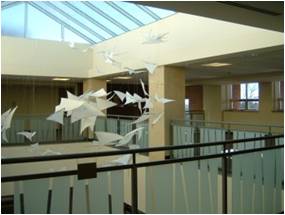Post Consumer Fiber Paper
Every ton (about 40 cartons) of 30% postconsumer content copier paper saves the equivalent of 7.2 trees
Source: ConservaTree![]()
Related Topics
Post-Consumer
Post-consumer content is an end product that has completed its life cycle as a consumer item and rather than being sent to the landfill, it is diverted by reusing the material in a new product. Examples of items that may include post-consumer content are office paper, cardboard, aluminum cans, plastics and metals. By recycling materials that have served their intended use, new products can be made. For example, a plastic bottle can become carpet backing by placing it in a recycling bin. It’s just as important to purchase materials that contain recycled content as it is to recycle.
Whole Building Design Guide | Evaluating and Selecting Green Products![]()
Recycling
Recycling is the process of collecting and processing materials (that would otherwise be thrown away as trash) and remanufacturing them into new products. Recycling support stations and the education of occupants and janitorial staff are the backbone of a successful waste diversion plan. Start by confirming with the recycling hauler and compost service what materials are acceptable and the proper collection method. Separate, color-coded, well-labeled and strategically placed recycling containers and waste receptacles make sorting and collection convenient and support occupant participation.

